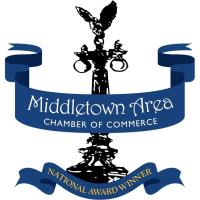Launching a business is an act of courage — but sustaining it requires discipline. Smart founders know that risk is not the enemy; unmanaged risk is. This guide helps you structure your company so that volatility becomes a strategic advantage instead of a survival threat.
Why Smart Founders Embrace Risk, Not Avoid It
Risk management isn’t about building walls — it’s about building shock absorbers.
Founders who succeed long-term learn to predict, absorb, and redirect volatility toward growth.
Common Startup Risk Types
-
Strategic risk: Failed pivots or sudden market disruption
-
Operational risk: Team turnover, supply issues, or process gaps
-
Financial risk: Burn rate spikes or cash flow mismanagement
-
Legal risk: Noncompliance, IP disputes, or regulatory oversights
-
Reputational risk: Brand damage through negative PR or poor partnerships
A founder’s true competitive edge lies in anticipating these categories before they surface.
Legal Foundations: Structuring for Safety
Every venture begins with structure. The legal setup you choose defines how well you can protect assets, resolve disputes, and scale internationally.
One early priority is establishing a registered agent office in Delaware, which ensures your company remains compliant with state requirements while protecting your privacy and enabling secure delivery of legal correspondence.
Legal Stability Checklist

Separate personal and business accounts

Draft founder vesting and operating agreements early

Register IP, trademarks, and domains under the company, not individuals

Keep board minutes and resolutions organized for due diligence
For reliable digital document management, tools like Xodo Sign simplify contract versioning and signature tracking.
Financial Risk: Making Liquidity a Strategic Weapon
Cash flow failure kills more startups than competition. Resilience starts with managing your liquidity runway like a product — something that must be measured, iterated, and optimized.
The Founder’s Financial Safety Protocol
-
Maintain 6–9 months of runway in accessible reserves
-
Separate operational and emergency funds
-
Build scenario plans for best-, base-, and stress-case outcomes
-
Review burn rate monthly, not quarterly
-
Secure revolving credit before you need it
For founders who want real-time visibility, Float offers cash flow forecasting dashboards that integrate directly with accounting software.
Operational Risk: Systems Over Heroics
Growth often hides fragility. The greatest operational risk appears when teams rely on individual heroics instead of structured systems.
|
Function
|
Typical Failure Point
|
Preventive System
|
|
Hiring
|
Role overlap
|
Written SOPs and clear onboarding
|
|
Vendor relations
|
Overdependence on one supplier
|
Dual sourcing and contract review cycles
|
|
Cybersecurity
|
Weak passwords, no MFA
|
Password manager + zero-trust protocols
|
|
Documentation
|
Knowledge lost with turnover
|
Cloud-based document repository
|
|
Incident response
|
No chain of command
|
Defined escalation matrix and response drills
|
For process automation and internal SOP tracking, Process Street can standardize workflows without adding bureaucracy.
Strategic Risk: Data as a Defensive Moat
Data is a founder’s radar system. Without it, you’re navigating in fog.
Data-Driven Risk Prevention
-
Build a signal dashboard: Track only metrics that drive future outcomes.
-
Run “premortems”: Ask, “How might this fail?” before launching.
-
Simulate downturns: Model revenue drops and market shifts quarterly.
Tools like Causal allow founders to create interactive financial and operational models for scenario planning without complex spreadsheets.
Cultural Risk: Building a Team That Thrives Under Pressure
People create — or eliminate — most business risk. Culture is your invisible insurance policy.
Risk-Resilient Culture Principles
-
Transparency builds trust: Share performance data and constraints openly.
-
Process is not red tape: Clear structures reduce chaos and burnout.
-
Psychological safety matters: Encourage employees to flag issues early.
For globally distributed teams, Deel offers compliant hiring, payroll, and risk-mitigation support in over 150 countries.
Governance in Practice: Everyday Tools and Tactics
Effective risk management requires operational visibility — not just documentation.
Establish a rhythm of governance reviews where founders, CFOs, and operations leads inspect vulnerabilities together.
Weekly Risk Review Framework
-
Review key vendor exposures
-
Check compliance tasks due this month
-
Audit expense categories for anomalies
-
Run system security checks
-
Update insurance coverage and emergency contacts
Founders can automate monitoring using Trello or other task visualization tools to keep risk actions visible and accountable.
Insurance & Contingency Planning: The Silent Shield
Every founder needs coverage — not just against liability but uncertainty itself.
Consider:
-
General Liability Insurance
-
Errors & Omissions (E&O) Insurance
-
Cybersecurity Coverage
-
Business Interruption Protection
For startups seeking tailored coverage, Embroker provides founder-friendly policies that scale with company growth.
Frequently Asked Questions
Q1: When should I implement a risk management plan?
Immediately. Even a two-person team should map out its operational and legal exposures.
Q2: What’s the most overlooked risk for early founders?
Data privacy and contract ambiguity — both are fixable early but costly later.
Q3: How can I protect against financial volatility?
Automate cash flow reporting, diversify income streams, and avoid overreliance on a single funding source.
Q4: Do I need a dedicated compliance officer?
Not at the beginning. A structured checklist managed through a project tool like Trello or Notion can handle early compliance tasks.
Q5: What insurance should I prioritize first?
Cybersecurity and professional liability — digital threats and misrepresentation claims are growing fastest.
Turning Risk Into Strategic Advantage
In the modern founder’s playbook, risk isn’t something you react to — it’s something you design for.
The companies that dominate in uncertainty are those that treat resilience as part of their growth DNA.
Principle Summary:
-
Structure your legal foundation early.
-
Treat cash flow visibility as non-negotiable.
-
Build operational systems before scaling.
-
Anchor culture and governance in transparency.
-
Use data not as a record but as a warning system.
Every founder faces risk — but not every founder builds with it in mind.
Smart founders create structures that anticipate turbulence, using legal discipline, systemized operations, and transparent culture to transform uncertainty into strategic confidence.
When you plan for volatility, you don’t just survive — you build to outlast.



